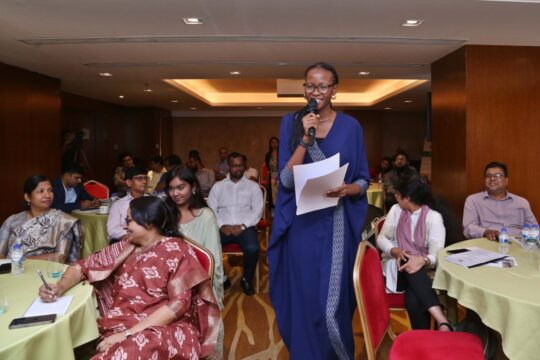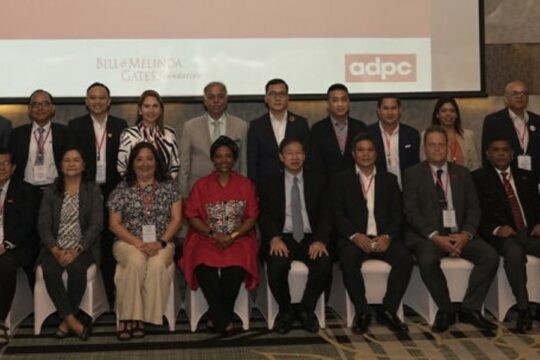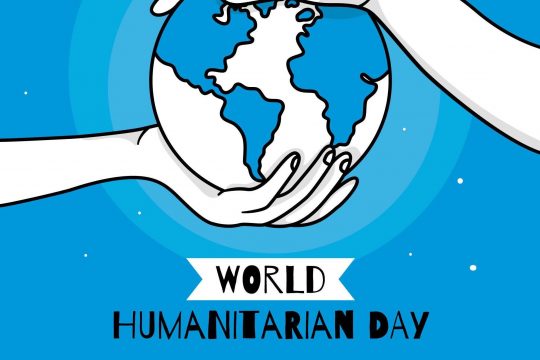Date: 21st February 2025
Location: Four Points Resort, Anuradhapura, Sri Lanka
The Sri Lanka Preparedness Partnership (SLPP) successfully held a Subnational Stakeholder Consultation Workshop in Anuradhapura marking a vital step toward improving disaster preparedness in the Medawachchiya Divisional Secretariat (DS) Division. The event brought together government officials, civil society representatives, and private sector actors to collaboratively address local disaster risks and strengthen community-based risk reduction measures.
Workshop Objectives
The primary objective of the workshop was to identify the most vulnerable disaster prone Grama Niladhari (GN) Divisions within the Medawachchiya DS Division. Additionally, the workshop focused on the following objectives:
- Raising awareness about SLPP initiatives and partnerships.
- Assessing the existing Community Based Disaster Risk Management (CBDRM) practices.
- Incorporating local knowledge and technical expertise in identifying context specific vulnerabilities and disaster-prone areas.
- Obtaining feedback on previously unrecognized disaster risks, assessing the current district risk profile, and identifying gaps in existing disaster mitigation and preparedness measures.
Activities in a frame:

District Risk and Vulnerability Profiling
Mr. A.M.R.K. Rathnayaka, Assistant Director of the Anuradhapura district, DMC Sri Lanka underscored the major disasters impacting the district. Theseinclude drought, floods/flash floods, transmission of communicable diseases, lightning strikes, high winds/cyclones, and animal attacks, forest fires, illegal and automatic gun traps set for wild animals, and unauthorized constructions.
The presentation highlighted several areas at risk, including the flooding of transportation routes due to the opening of sluice gates in various reservoirs such as Kala Wewa, Rajanganaya reservoir, Nachchaduwa reservoir, and Padaviya reservoir. Additionally, the Wild Elephant Damage Report for Anuradhapura District in 2024 noted significant loss of life, property damage, and physical damage caused by elephant related incidents.
However, it was agreed during the consultations, that available data was inadequate to conclusively determine the two most vulnerable disaster prone GN divisions in the Madawachchiya area. Therefore, for granularity of the data, it was decided to engage directly with the affected communities in the identified disaster-prone areas within the Madawachchiya Division. This shall provide thefirsthand information and raw data necessary for identifying the most vulnerable and high-risk disaster prone GN divisions.
Raising Awareness about SLPP initiatives and partnerships among Local stakeholders
Dr. Janaka Hemathilaka, CEO of Janathakshan GTE Ltd. emphasized that SLPP adopts a multi-stakeholder partnership approach to mobilize and localize disaster preparedness efforts, ensuring broader engagement across various sectors.
Ms. Buddhima Gunarathna, Manager – Resilience, outlined SLPP’s roadmap for Anuradhapura, which includes building early warning mechanisms and enhancing local committee capacities. Additionally, she provided an overview of the project, including details on the funding agency, objectives, expected outcomes, funding sources, budget allocation, duration, and implementation approach.
Evaluating the existing CBDRM and EWS practices in the district
The group activity highlighted the current CBDRM and EWS system in each village. It was noted that each village has a Rural Disaster Management Committees (RDMCs) which are divided into five sub-committees, focused on specific areas related to disaster management. It has the participation of community leaders along with other stakeholders to ensure community level inclusion. But there was a strong consensus on the need for better coordination between government bodies, NGOs, and civil society organizations. Participants highlighted that disaster response teams should be formalized, and ongoing community-based disaster management programs should be sustained with local involvement.
The EWS information dissemination is currently through the telephone, social media, instant messaging. WhatsApp is being used within the RDMC members and the relevant local community.
The flow of information is as follows:

This system allows national level messages to be disseminated swiftly from the district level to divisional level and then to the village level or the community.
This workshop underscored the need of improving this modality. Participants noted a challenge which is the limited access to smartphones and low digital literacy among some community members, especially among the elderly. These challenges tend to occasionally hinder effective communication through digital platforms.
Integrating local knowledge with technical expertise
The workshop provided a platform to express the local knowledge and technical expertise required to identify the vulnerabilities in the disaster-prone areas. It is through these discussions that the community- driven insights and recommendations were systematically gathered. These locally sourced suggestions will be then integrated with technical expertise provided by relevant authorities and experts from technical agencies. This collaborative approach ensures that disaster mitigation measures and preparedness plans are not only technically sound but also tailored to address the specific vulnerabilities and risks unique to each area within the district.
Identifying the unrecognized disasters and gaps
During the group activities the participants engaged in focused group discussions to identify overlooked disasters, current intervention gaps, and propose tailored strategies.
Key themes included:
- Human-wildlife conflict mitigation through wildlife corridors and electric fencing.
- Improved flood and drought management with better reservoir maintenance and water distribution.
- Community health interventions, focusing on nutrition, mental health, and chronic disease prevention.
- Youth education and awareness, promoting awareness of climate resilience and safety targeting rural areas.
- Environmental preservation, with calls for forest regeneration and strict control on deforestation.
Key recommendations from the workshop included:
- To conduct community-level group discussions and individual interviews to verify the vulnerable areas and gather detailed insights from divisional and Grama Niladhari level.
- For the identified areas:
- Strengthen early warning systems for droughts and floods.
- Improve inter-agency coordination and community participation mechanisms.
- Expand wildlife corridors and implement technological solutions to prevent human-wildlife conflicts, improving water resource management, and establishing mobile health clinics.
Conclusion and way forward
The subnational stakeholder consultation workshop held in Anuradhapura was a significant step towards enhancing disaster resilience within the Medawachchiya Divisional Secretariat Division. Through active participation and collaborative discussions, valuable insights were gathered on the selected DS Division’s vulnerabilities and the effectiveness of current disaster management strategies. The identification of previously unrecognized disaster risks, particularly in relation to wildlife and water management, emphasized the need for targeted, community driven interventions.
Moving forward, the next steps would focus on identifying the most vulnerable Grama Niladhari Divisions (GNDs) through ground level consultations and integrating community input into disaster preparedness plans.


